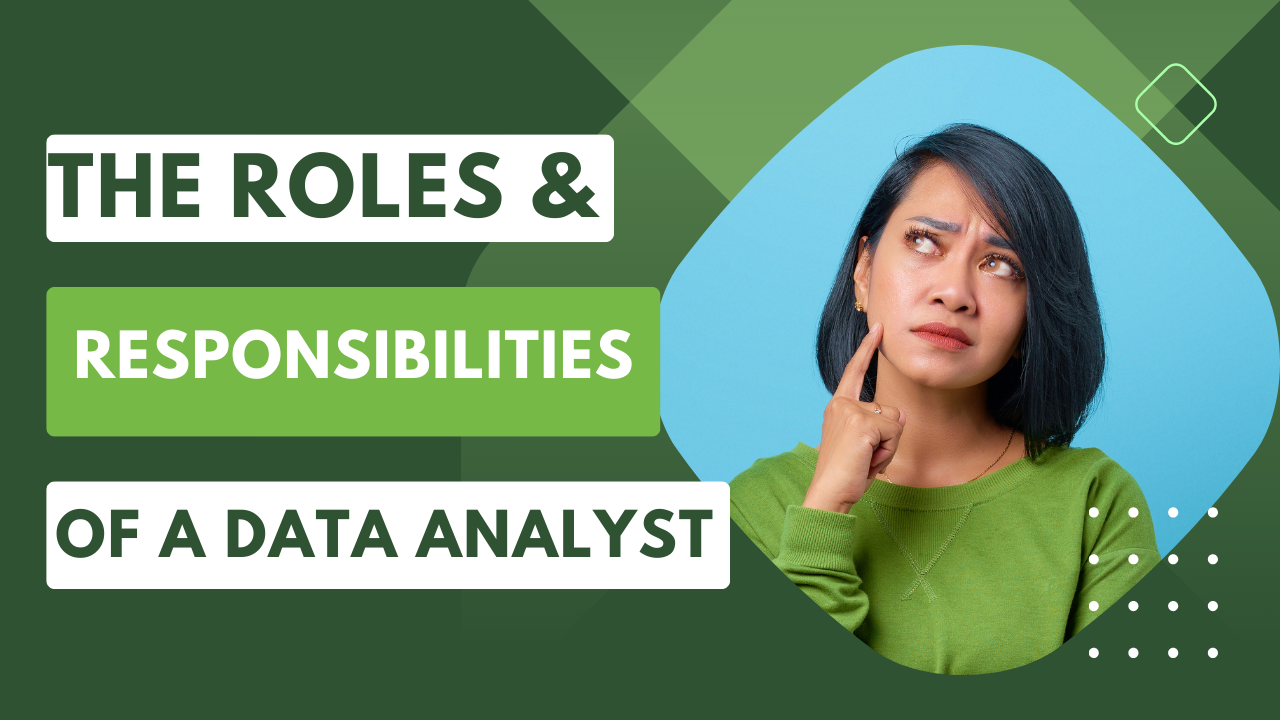Our Blog
Ads

Posted: 11-Nov-2023, 2 years ago
Unlocking Insights: The Roles and Responsibilities of a Data Analyst
In today's data-driven world, organizations are leveraging vast amounts of data to gain valuable insights and make informed decisions. At the forefront of this transformative process is the data analyst, a crucial player in the realm of analytics. Let's dive into the multifaceted world of data analysis and explore the key roles and responsibilities that define this pivotal position.
Roles and Responsibilities:
Data Collection and Cleaning:
- Collecting raw data from various sources, ensuring its accuracy and completeness.
- Cleaning and organizing data sets to eliminate inconsistencies and errors, creating a solid foundation for analysis.
Data Exploration and Analysis:
- Conducting exploratory data analysis (EDA) to understand patterns, trends, and relationships within the data.
- Utilizing statistical methods and tools to derive meaningful insights and identify potential correlations.
Data Visualization:
- Creating visually compelling charts, graphs, and dashboards to effectively communicate complex findings to non-technical stakeholders.
- Using tools like Tableau or Power BI to translate data into actionable visual narratives.
Predictive Modeling:
- Building and implementing predictive models to forecast future trends and outcomes.
- Employing machine learning algorithms to develop predictive analytics that enhance decision-making processes.
Reporting and Presentations:
- Generating comprehensive reports detailing analysis methodologies, results, and actionable recommendations.
- Presenting findings to key stakeholders in a clear and accessible manner, facilitating data-driven decision-making.
Collaboration with Cross-functional Teams:
- Working closely with teams across various departments to understand their data needs and provide analytical support.
- Collaborating with data engineers, scientists, and business analysts to ensure a cohesive approach to data-driven initiatives.
Continuous Learning and Skill Development:
- Staying abreast of industry trends, emerging technologies, and advancements in data analytics.
- Expanding skill sets by learning new tools, programming languages, and techniques to remain at the forefront of the rapidly evolving field.
Ethical Data Handling:
- Ensuring compliance with data privacy regulations and ethical standards in data collection, analysis, and reporting.
- Implementing secure practices to safeguard sensitive information and maintain data integrity.
Conclusion:
In the dynamic landscape of data analytics, the role of a data analyst is integral to transforming raw data into actionable insights that drive organizational success. From data wrangling to predictive modeling, and from insightful visualizations to ethical data handling, data analysts play a pivotal role in empowering businesses with the knowledge needed to make strategic decisions.
As organizations continue to recognize the importance of data-driven decision-making, the demand for skilled data analysts is on the rise. By embracing the diverse responsibilities outlined above, data analysts contribute significantly to the growth and innovation of businesses across various industries. Whether you're a seasoned professional or an aspiring data analyst, understanding and embodying these roles and responsibilities is key to making a meaningful impact in the world of data analytics.





